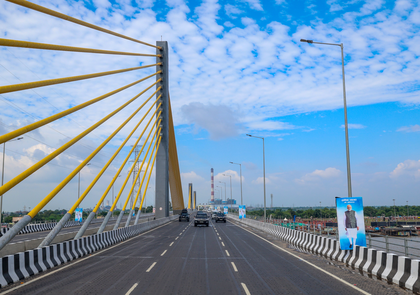A ‘double engine’ effort to pull Begusarai back to its old industrial glory
By IANS | Updated: October 24, 2025 17:30 IST2025-10-24T17:28:00+5:302025-10-24T17:30:39+5:30
New Delhi, Oct 24 Prime Minister Narendra Modi, while addressing an election rally in Begusarai on Friday, recalled ...

A ‘double engine’ effort to pull Begusarai back to its old industrial glory
New Delhi, Oct 24 Prime Minister Narendra Modi, while addressing an election rally in Begusarai on Friday, recalled the past glory of the region once hailed as “the industrial capital of Bihar".
After Independence, Begusarai’s strategic location and river access positioned it as a major industrial hub, largely driven by public sector undertakings (PSUs).
It experienced a significant industrial rise in the mid-20th century, evolving into a prominent centre for state-owned enterprises. However, this growth was followed by a prolonged period of decline.
Beginning in the late 1990s and continuing into the early 2000s, Begusarai—like several other industrial areas in Bihar -- witnessed de-industrialisation. Its prominence waned due to policy neglect, operational inefficiencies, and a lack of reinvestment, leading to the closure or downsizing of key enterprises.
The district was once a cornerstone of Bihar’s economy, anchored by flagship projects in and around Barauni, including the Indian Oil Corporation Limited (IOCL) refinery, one of the region’s most significant industrial landmarks.
The Barauni Refinery became a vital energy source for various downstream industries, ranging from plastics to pharmaceuticals. Over time, however, it faced challenges stemming from ageing units, periodic shutdowns for maintenance and upgrades, and the high capital costs of revamp projects.
Indian Oil is now undertaking a major modernisation and capacity expansion programme at the Barauni plant as part of a broader national initiative to strengthen the energy infrastructure.
Similarly, the Hindustan Fertilizer plant, which played a crucial role in supporting Bihar’s agriculture-driven economy, struggled with declining capacity and financial non-viability, eventually shutting down under the old public-sector framework.
Recognising the strategic importance of domestic fertiliser production and the need to reduce urea imports, the Union government later prioritised the revival of such defunct units. This led to the establishment of the Hindustan Urvarak & Rasayan Ltd (HURL) fertiliser plant in Barauni, which the Prime Minister inaugurated and dedicated to the nation in March last year.
Another major enterprise, NTPC’s Barauni Thermal Power Station, long served as a backbone of the district’s industrial ecosystem. From the late 20th century, it grappled with ageing infrastructure and evolving market and environmental norms. Recent national efforts promoting cleaner, more efficient generation have led to unit-wise rehabilitation, improved compliance, and tighter operational management to ensure reliability.
A concerted push by both the central and state governments—the so-called “double engine” approach—is now helping revive Begusarai’s industrial landscape.
In August this year, Prime Minister Modi inaugurated Asia’s widest six-lane bridge across the Ganga, connecting North and South Bihar between Aunta in Munger district and Simaria in Begusarai, providing a major boost to logistics and connectivity.
Efforts to attract fresh investment and revive dormant industrial assets are gradually restoring the district’s economic vitality.
Private players, too, are contributing to this resurgence. Campa Cola has announced a major beverage manufacturing plant in Begusarai, expected to generate new employment opportunities and invigorate local industry.
Sudha Dairy also operates a major facility in Begusarai, which has emerged as one of Bihar’s key milk processing and export hubs. Both the state and Union governments are working in tandem to provide a supportive ecosystem for investors and promote the establishment of new factories.
Disclaimer: This post has been auto-published from an agency feed without any modifications to the text and has not been reviewed by an editor
Open in app